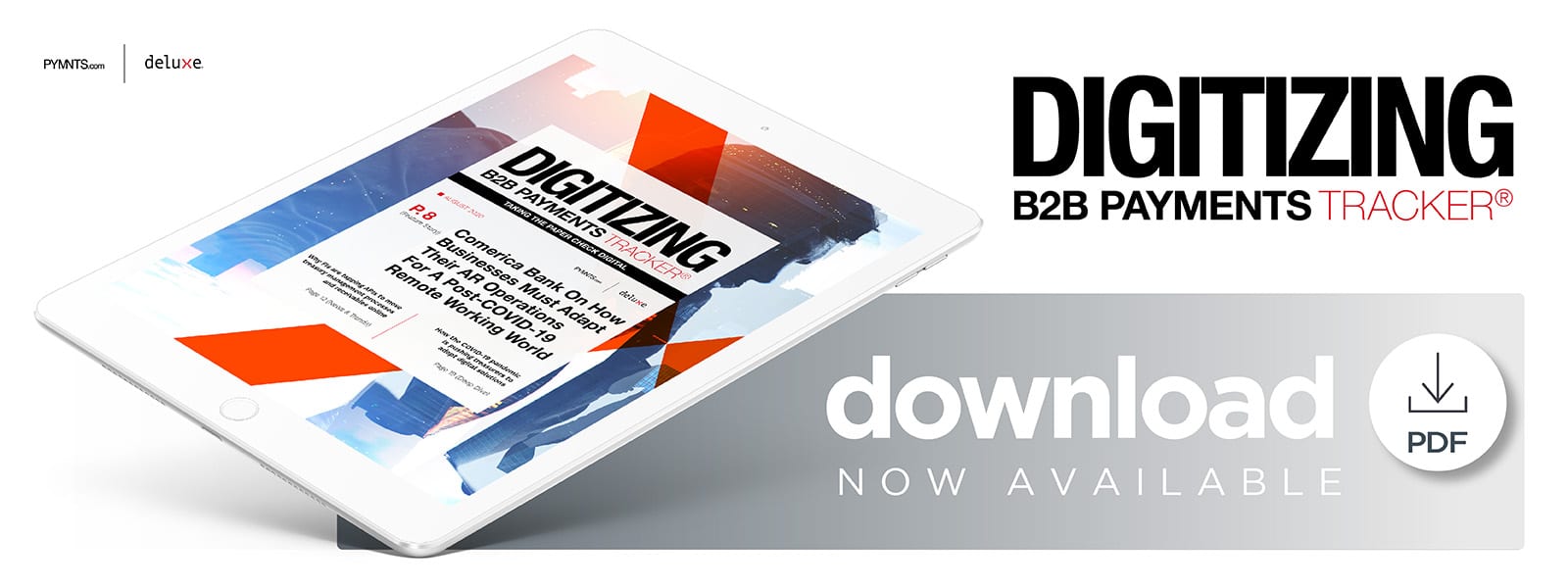Comerica Bank On How Businesses Must Adapt Their AR Operations For A Post-COVID-19 Working World

Businesses can no longer complete manual accounts-receivable processes without time-consuming technological workarounds, says Crystal Stephens, vice president and corporate receivables product manager for Comerica Bank. In the latest Digitizing B2B Payments Tracker, Stephens discusses how digital tools like remote check deposit can ease AR departments’ digital transitions.
Businesses had for a long time relied on paper-based AR processes, which got the job done despite relative inefficiency. These processes were often built around manually sending paper invoices and receiving payments in the mail. The COVID-19 pandemic and the ensuing need for businesses to operate remotely changed these routines, however. Manual processes that took place in the office could no longer be accomplished without technological workarounds — leaving companies struggling to collect funds and properly manage their AR processes.
“What we found was that [the] COVID-19 [pandemic] uncovered weaknesses in many of our customers’ account receivables and treasury processes that they were not aware of before,” Crystal Stephens, vice president and corporate receivables product manager for Comerica Bank, said in a recent PYMNTS interview.
Data that could previously be accessed at physical locations must now be accessed digitally, as many companies’ workforces are currently operating remotely — a situation that most businesses have never experienced.
This shift is forcing businesses to digitize their operations and is highlighting inefficiencies in their AR processes. Many firms are, in turn, looking to their banks and financial partners for access to integrated receivables solutions that can help them eliminate their manual processes and streamline their AR procedures.
Fitting Interoffice AR To Remote Work
Relying on remote workforces to handle AR processes has created numerous complexities for businesses. Processes like cash flow reconciliation that were typically done manually using equipment at one physical location can no longer be completed at the same speed.
“We are hearing from our customers that it will require as much as four times the work and effort to conduct manual receivable [processes] in a post-COVID-19 environment compared to prior [to the pandemic],” Stephens said.
The prolonged time it is now taking businesses to finalize their AR transactions is creating new friction points in client relationships, prompting them to look for ways to alleviate these frustrations while attempting to reduce costs. This is prompting many companies to consider the benefits of digitizing their AR processes, as doing so can save both time and money. Recent PYMNTS research has shown that firms without automated tools integrated into their AR processes can take nearly a month to follow up on unpaid receivables, for example. This time frame is no longer acceptable for the many companies trying to manage their operations as the pandemic constricts their cash flows.
“So as a result, our customers are looking to automate their AR in a more immediate fashion,” Stephens explained. “Whereas before, when we would speak to customers about automating their AR, their attitude was more, ‘Yes, we know we want to get to that,’ now it is like, ‘We need to be there now.’”
Comerica Bank is seeing an increased demand for solutions that can help firms bridge this gap, she continued. Businesses are interested in features that enable them to more transparently view incoming receivables, including digital solutions that can help better track their statuses in real time on virtual dashboards. Stephens said tools that are typically considered consumer-facing, such as mobile deposit
features, may also see expanded use for AR processes.
Mobile Solutions And AR’s Future
Spreading out AR workforces across dozens of locations instead of concentrating them in one central point is a big change, even though employees possess digital tools through which they can communicate with one another and their clients. The move is forcing firms to evaluate products designed for simpler, mobile-friendly solutions as they must adapt their AR and other treasury processes to the needs of a remote workforce.
“Because of the remote work environment, we are hearing that customers are needing to be more agile themselves [when it comes] to accessibility to their banks’ solutions,” Stephens said. “That is where mobile comes into play. For example, a lot of customers left their scanners behind at their offices; they do not have access to online deposit solutions as a result, so there is an increase in demand for the mobile solution set … to provide [that] mobility and agility.”
Financial institutions (FIs) must carefully balance the speed firms seek with tools that can support more complex use cases, she said. They must also diligently assess the viability of digital tools and understand how they can help improve their operations.
“For example, a business may want a mobile check deposit solution, but a consumer solution may not be sufficient for their needs,” Stephens said. “The business actually wants the more robust commercial functionality of a mobile check deposit solution, and they still want the simplicity of the consumer interface.”
Businesses looking to embrace technological innovations to digitize their AR processes and handle operations more efficiently need to additionally keep a careful eye on how the pandemic continues to affect their bottom lines. These companies must also labor to craft processes that can help them fluidly respond to these shifts.

